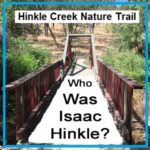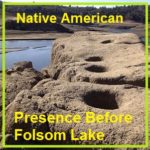In conducting the affairs of the superintendency, I have rejected entirely the idea of making treaties with the Indians, or recognizing in any way the rights which they claim to the soil.

Kevin Knauss: Health, History, Travel, Insurance
Post related to Native American health insurance plans or the history of Native Americans in the Sacramento-Folsom-Auburn Region.



From my car at the Oregon Bar parking lot, to the point where I estimated the first tunnel was located, is a little over 2.65 miles. However, those 2 miles, along the river, over the river cobble, cliffs, and sand bars is some of the most challenging and strenuous terrain I have hiked over. There are points where bare rock juts into the river and you must literally climb up and over the slate or granite.


Isaac Hinkle was 25 years old and working on his father’s farm in Indiana in 1880. His older brother Amos had left the farm for California and Isaac decided to follow him in 1881. By 1882 Isaac was a registered voter in Sacramento County’s Mississippi Township. In 1885 Isaac married Jessie Brown and would have a long marriage with Jessie for the next 48 years. Also in 1885 Isaac Hinkle would make his first land purchase. He bought land in the town of Ashland from John Cardwell who was a large owner of in the area for $850. Even though the land was within the Public Land Survey System of Townships and Ranges, the deed refers to original metes and bounds description before the 1865 official survey map.


There is no record of when the last Native American camp ceased to exist in the Folsom Lake region. Many historians note that by 1853, most of the Native American population had dispersed, move south, died in conflicts with immigrant settlers, or died of disease. But there is no doubt that there was a thriving Native American population and culture along the north and south forks of the American River. Where Native Americans once ground acorns, skinned deer, or fashioned tools from local rocks, Folsom Lake visitors now fish, hike, ride horses, bikes, and have picnics.

Spam prevention powered by Akismet